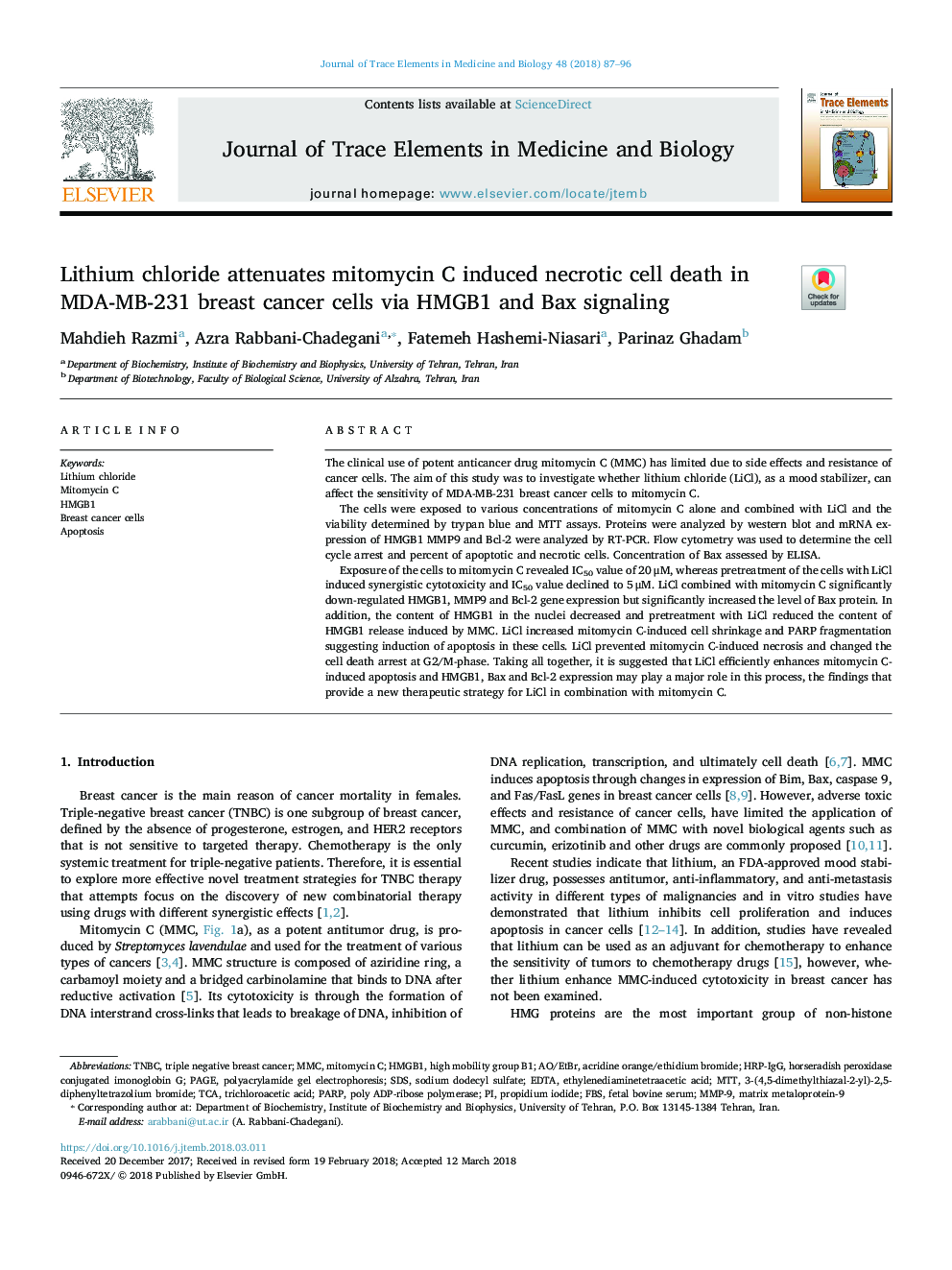| Article ID | Journal | Published Year | Pages | File Type |
|---|---|---|---|---|
| 7638831 | Journal of Trace Elements in Medicine and Biology | 2018 | 10 Pages |
Abstract
Exposure of the cells to mitomycin C revealed IC50 value of 20â¯Î¼M, whereas pretreatment of the cells with LiCl induced synergistic cytotoxicity and IC50 value declined to 5â¯Î¼M. LiCl combined with mitomycin C significantly down-regulated HMGB1, MMP9 and Bcl-2 gene expression but significantly increased the level of Bax protein. In addition, the content of HMGB1 in the nuclei decreased and pretreatment with LiCl reduced the content of HMGB1 release induced by MMC. LiCl increased mitomycin C-induced cell shrinkage and PARP fragmentation suggesting induction of apoptosis in these cells. LiCl prevented mitomycin C-induced necrosis and changed the cell death arrest at G2/M-phase. Taking all together, it is suggested that LiCl efficiently enhances mitomycin C-induced apoptosis and HMGB1, Bax and Bcl-2 expression may play a major role in this process, the findings that provide a new therapeutic strategy for LiCl in combination with mitomycin C.
Keywords
TNBCSDSFBSPARPMMCTCAHMGB1Mitomycin CPAGEMMP-9MTTacridine orange/ethidium bromideEDTAEthylenediaminetetraacetic acidtrichloroacetic acidpolyacrylamide gel electrophoresisApoptosissodium dodecyl sulfateTriple negative breast cancerfetal bovine serumBreast cancer cellslithium chloridePropidium iodidepoly ADP-ribose polymerase
Related Topics
Physical Sciences and Engineering
Chemistry
Analytical Chemistry
Authors
Mahdieh Razmi, Azra Rabbani-Chadegani, Fatemeh Hashemi-Niasari, Parinaz Ghadam,
